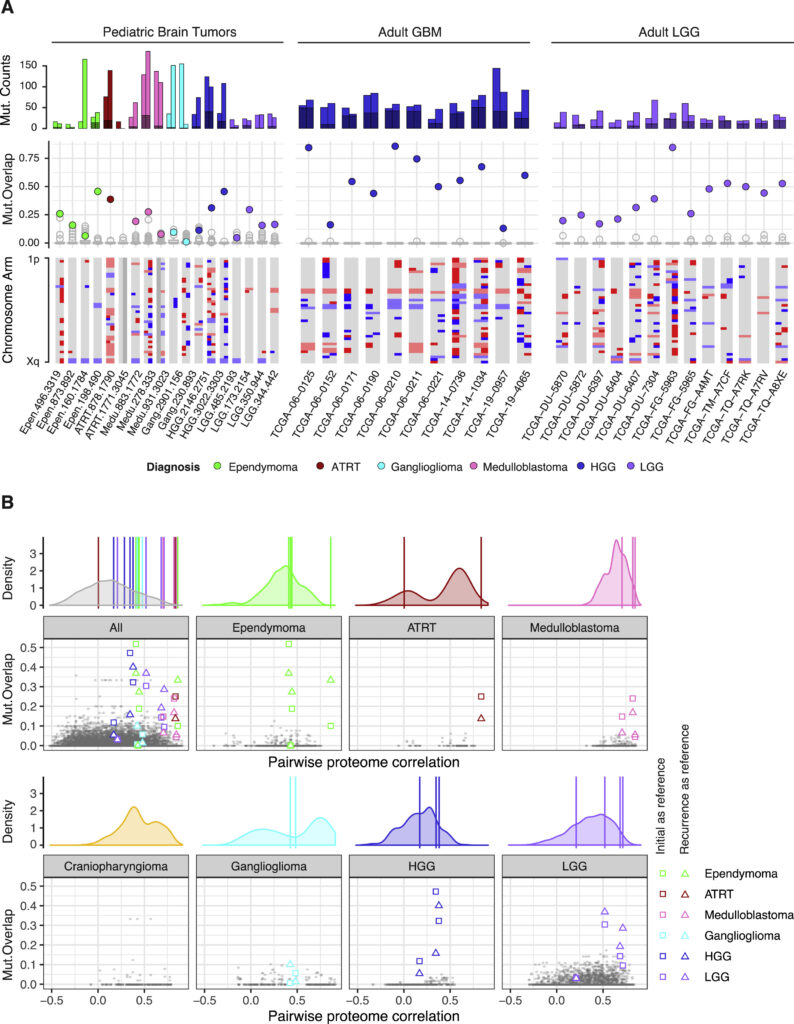February 12, 2021
Better Understanding Pediatric Brain Tumors

For this research roundup, we have three stories of ways researchers have made significant progress in understanding and analyzing pediatric brain tumor biology. These advances are important to the development of new treatments and better prognosis for children and families facing brain tumors.
Major New Analysis of 218 Pediatric Brain Tumors Released
A large multi-center collaboration of researchers have published a major new analysis of genetics and proteins across wide range of pediatric brain tumors, based on 218 tumor samples from patients. The effort was coordinated through the National Cancer Center’s Clinical Proteomic Tumor Analysis Consortium (CPTAC) and the Children’s Brain Tumor Network.

The researchers sequenced the DNA of the tumors and mapped out all the proteins, genes, and RNA transcription involved in their biology. This represents a major effort to improve our understanding what, exactly, happens inside different pediatric brain tumor. The study, which was published in the medical journal Cell, is likely to be widely read and processed by researchers in the field.
The study documented pediatric tumors across seven major types: low-grade glioma, ependymoma, high-grade glioma, medulloblastoma , ganglioglioma, craniopharyngioma, and atypical teratoid rhabdoid tumor.
A researcher who was not involved in the study, Sriram Venneti of University of Michigan, described it to StatNews as a “breakthrough study” which “tackles pediatric brain tumors on a new level.”

Read more at Mount Sinai Icahn School of Medicine Newsroom
Read the original publication in medical journal Cell
Johns Hopkins Team Improves Diagnostics for medulloblastoma tumors
The common pediatric brain tumor medulloblastoma can be categorized as either a fast-growing treatment-resistant type, or a slower-growing, more treatable type. Researchers at Johns Hopkins have discovered a biomarker that allows doctors to distinguish the two types via genetic sequencing. Knowing which of the two tumors a child has will allow families to make more informed treatment decisions, and may lead to improved treatment techniques down the road.
Read More: Johns Hopkins Newsroom
St. Jude Announces New Resource For Researchers Studying Pediatric Brain Tumors
St. Jude Children’s Research Hospital announced a new data tool where at outside institutions can access brain tumor models of a wide variety of pediatric brain tumors, which they can use to explore and test new diagnostics and therapies.
Increasingly, doctors and researchers use cloud-based data in their studies; such tools allow them to conduct research on well-documented examples of tumors, beyond what they might be able to get from their own patients. This promises faster progress and better science.
St. Jude researchers created 37 tumor models generated from samples of pediatric medulloblastoma, ependymoma, atypical teratoid rhabdoid tumor and embryonal tumors donated by patient families. The models are available via the St. Jude Cloud.